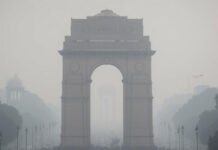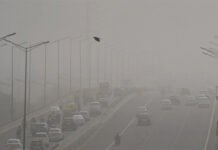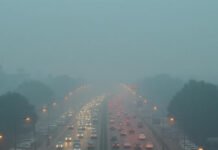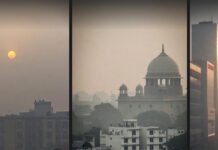As India gears up for Diwali 2025, the Indian Institute of Tropical Meteorology (IITM) has issued a warning: major cities are likely to experience dangerously high levels of air pollution, with PM2.5 concentrations expected to spike during the festive period. Cities such as Delhi, Mumbai, Pune, Bengaluru, and Kolkata are at risk of poor air quality due to a combination of firecracker emissions, crop stubble burning, and vehicular pollution.
“This Diwali, citizens must remain vigilant. Pollution levels could reach hazardous thresholds, especially in northern India,” said Dr. R. K. Singh, senior scientist at IITM.
Predicted Pollution Levels
According to IITM’s forecast, PM2.5 levels in Delhi could exceed 350 µg/m³, categorizing the air as ‘hazardous’. Mumbai and Bengaluru are expected to experience moderate to high pollution levels, while Kolkata and Pune may see spikes primarily due to localized firecracker use.
“Meteorological conditions, including low wind speed and temperature inversion, will trap pollutants near the ground, amplifying health risks,” explained Dr. Singh.
Health Implications
High PM2.5 pollution is linked to respiratory illnesses, cardiovascular issues, and aggravation of asthma and chronic bronchitis. Vulnerable populations, including children, the elderly, and those with pre-existing conditions, are particularly at risk.
Dr. Anjali Verma, pulmonologist at AIIMS Delhi, warned, “Even short-term exposure to these PM2.5 levels can cause breathing difficulties, eye irritation, and increased hospital visits.”
IITM recommends that citizens limit outdoor activities during peak pollution hours, use N95 masks, and maintain indoor air quality with purifiers where possible.
Causes Behind the Spike
The forecasted pollution surge results from multiple contributing factors:
Firecracker Emissions: Diwali celebrations traditionally involve firecrackers, which release high levels of particulate matter and heavy metals into the air.
Crop Stubble Burning: Northern states, particularly Punjab and Haryana, continue to burn crop residue, sending pollutants downstream to cities like Delhi.
Vehicular Pollution: Increased traffic during the festive period adds to the already high baseline pollution.
Meteorological Conditions: Low wind speed, low humidity, and temperature inversion trap pollutants near the surface.
“It’s a perfect storm scenario: festive firecrackers combined with existing pollution sources will worsen air quality,” said environmental analyst Ramesh Malhotra.
Government and Civic Measures
Several city governments have announced temporary restrictions on firecracker sales, promotion of eco-friendly alternatives, and increased air quality monitoring. Delhi Police and municipal authorities have also deployed mobile air quality sensors to track hotspots and warn residents in real time.
Civic groups are conducting awareness campaigns, urging citizens to celebrate responsibly and reduce unnecessary pollution. Online campaigns like #GreenDiwali2025 encourage households to switch to LED lights and digital celebrations.
Community and Individual Responsibility
Experts emphasize that tackling Diwali pollution is a shared responsibility. While government action is critical, citizens can make a tangible difference by reducing firecracker use, carpooling, and supporting eco-friendly practices.
“Every individual’s choice counts. Celebrating a cleaner Diwali protects vulnerable communities and ensures public health,” said Dr. Verma.
Looking Ahead
The IITM’s forecast highlights a growing environmental challenge that India faces every year. Public awareness, combined with policy interventions, can mitigate the harmful impact of festivals on air quality. Researchers also urge investment in sustainable alternatives, like low-smoke firecrackers, and long-term strategies to curb stubble burning and vehicular emissions.
In conclusion, Diwali 2025 promises festive joy, but citizens must heed the warnings from IITM. By taking preventive measures and adopting environmentally responsible habits, India can celebrate both tradition and health, ensuring that the festival is bright without compromising air quality.












